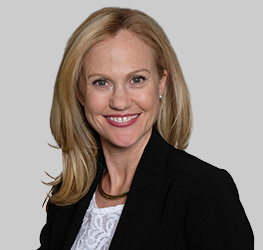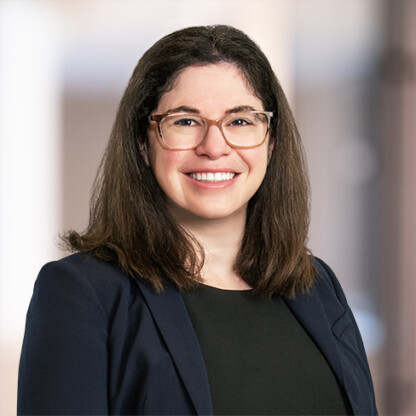Navigating Return Of Calif. COVID-19 Supplemental Sick Leave
This article originally appeared in Law360 Employment Authority on March 4, 2022. It is republished here with permission.
California COVID-19 supplemental sick leave is back.
After Gov. Gavin Newsom and the state Legislature came to an agreement earlier this year on the 2022 version of a COVID-19 supplemental sick leave law, mirror bills A.B. 841 and S.B. 1142 in the state Assembly and Senate worked their way through the Legislature, and the law was signed by the governor on Feb. 9. The law went into effect on Feb. 19.
Similar to last year’s COVID-19 supplemental sick leave law,3 the new law is retroactive to Jan. 1, meaning that an employee who took time off work before Feb. 19 is eligible for supplemental sick leave pay for that time. Supplemental sick leave will last through Sept. 30.
Changes in the Law
There are key similarities and important differences between the 2021 law and the 2022 law.
A primary difference is that 2022 supplemental sick leave is made up of two categories of leave. The first category consists of 40 hours of paid leave for any COVID-19 qualifying reason. This category is identical to the whole of the leave provided under the 2021 law. COVID-19 qualifying reasons include:
- The employee is subject to quarantine or isolation;
- The employee is advised by a health care provider to isolate or quarantine;
- The employee or a family member has an appointment for or symptoms from a COVID-19 vaccine or booster;
- The employee is experiencing symptoms of COVID-19;
- The employee is caring for a family member subject to quarantine or isolation; or
- The employee’s child’s school or place of care is closed due to COVID-19.
An addition in the 2022 law is that an employer may limit the COVID-19 supplemental sick leave for the employee or a family member attending an appointment for or experiencing symptoms from a COVID-19 vaccine or booster to three days or 24 hours of paid leave unless the employee provides verification from a health care provider that more leave is required.
For employees who do not work full time, the amount of leave required under the 2022 law is calculated the same way4 as in the 2021 COVID-19 supplemental leave law:
- Employees with a regular weekly schedule receive the number of hours they normally are scheduled to work in a week for each category.
- Employees without a regular weekly schedule who have been employed at least six months receive for each category seven times the average daily hours scheduled in the previous months.
- Employees without a regular weekly schedule who have been employed fewer than six months but more than eight days receive for each category seven times the average daily hours schedule over the course of their employment.
- Employees without a regular work schedule who have been employed fewer than eight days receive leave hours for each category total to the number of hours worked.
The second category of leave provided under the 2022 law is an additional 40 hours, or a calculated amount for a part-time employee, if the employee or a family member for whom the employee is providing care tests positive for COVID-19.
For this category of leave, an employer may require the employee to submit a diagnostic test showing that the employee or the family member in their care tested positive. Such a test must be provided by the employer at no cost to the employee. The employee does not need to exhaust the first category of leave to take the leave provided by this category.
Importantly, the 2022 law differs from the 2021 leave because an employer cannot require an employee to exhaust his or her COVID-19 supplemental sick leave when excluded from the workplace under any California Division of Occupational Safety and Health COVID-19 emergency temporary standards. If there is a local COVID-19 sick leave ordinance, an employer may count the leave provided under the state supplemental sick leave law toward the local ordinance.
An employer must provide notice, separately than on an employee’s pay stub, to employees about the 2022 COVID-19 supplemental sick leave through a physical or electronic notice. The labor commissioner has made a model notice5 available.
An employer must also list how much COVID-19 supplemental sick leave the employee has taken either on the pay stub or a separate writing on the pay date. This is a change from the 2021 law, which required the employer to list the amount of leave the employee had remaining. Under the 2022 law, only listing the amount of leave taken is proper. As with the 2021 law, supplemental sick leave must be listed as a separate item on the pay stub than regular paid sick leave.
What to Do Next and Keep in Mind
As an immediate next step, if they have not done so already, employers should give notice to their employees of the 2022 COVID-19 supplemental sick leave law. The labor commissioner drafted a model notice,6 which can be posted where other labor commissioner posters are posted if employees are mainly working in person. If employees are remote, an employer can send notice electronically.
Next, employers should be sure to update employee pay stubs to reflect the amount of supplemental leave an employee has taken. This must be a separate line item on a pay stub but need only list the amount of leave that the employee has used. If the employee has taken no leave as of the date of the pay stub, it should reflect that zero hours have been used.
Even though there are two categories of leave under the 2022 law, there need only be one line item on the pay stub. However, if an employer is requiring evidence of a positive COVID-19 test for the second category of leave, the employer should keep track of how much leave the employee has taken in each category. Doing this will help avoid accidentally requesting proof of a positive test for an employee taken leave from the first category.
There are two important things to keep in mind throughout the process of providing COVID-19 sick leave.
First, unlike in previous years, there are no direct tax credits at the federal or state levels for reimbursement of COVID-19 supplemental sick leave. However, alongside signing the 2022 COVID-19 supplemental sick leave law, Newsom signed S.B. 113,7 which provides some potential tax relief.
Second, as noted above, employers cannot require employees to use 2022 COVID-19 supplemental sick leave if they are excluded from the workplace under the Cal-OSHA COVID-19 emergency temporary standards.8 This is crucial to keep in mind, as a mistake could lead to an employee filing a claim or report of a labor law violation with the Labor Commissioner’s Office.
1 https://leginfo.legislature.ca.gov/faces/billTextClient.xhtml?bill_id=202120220AB84.
2 https://leginfo.legislature.ca.gov/faces/billTextClient.xhtml?bill_id=202120220SB114.
3 https://www.dir.ca.gov/dlse/COVID19Resources/FAQ-for-SPSL-2021.html.
4 https://www.dir.ca.gov/dlse/COVID19Resources/FAQ-for-SPSL-2021.html.
5 https://www.dir.ca.gov/dlse/COVID19resources/2022-COVID-19-SPSL-Poster.pdf.
6 Id.
7 https://leginfo.legislature.ca.gov/faces/billNavClient.xhtml?bill_id=202120220SB113.
8 https://www.dir.ca.gov/dosh/coronavirus/ETS.html.

